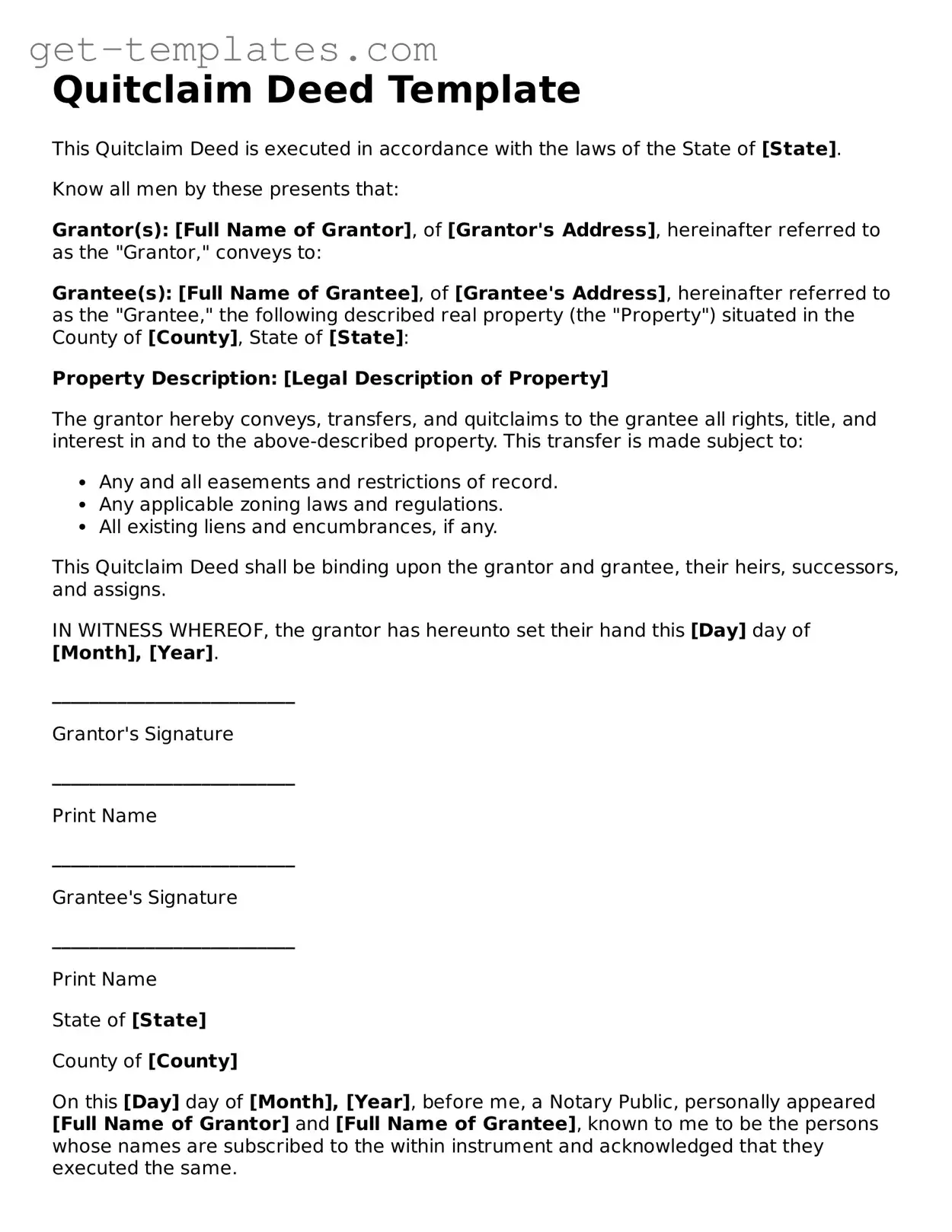Quitclaim Deed Template
This Quitclaim Deed is executed in accordance with the laws of the State of [State].
Know all men by these presents that:
Grantor(s): [Full Name of Grantor], of [Grantor's Address], hereinafter referred to as the "Grantor," conveys to:
Grantee(s): [Full Name of Grantee], of [Grantee's Address], hereinafter referred to as the "Grantee," the following described real property (the "Property") situated in the County of [County], State of [State]:
Property Description: [Legal Description of Property]
The grantor hereby conveys, transfers, and quitclaims to the grantee all rights, title, and interest in and to the above-described property. This transfer is made subject to:
- Any and all easements and restrictions of record.
- Any applicable zoning laws and regulations.
- All existing liens and encumbrances, if any.
This Quitclaim Deed shall be binding upon the grantor and grantee, their heirs, successors, and assigns.
IN WITNESS WHEREOF, the grantor has hereunto set their hand this [Day] day of [Month], [Year].
__________________________
Grantor's Signature
__________________________
Print Name
__________________________
Grantee's Signature
__________________________
Print Name
State of [State]
County of [County]
On this [Day] day of [Month], [Year], before me, a Notary Public, personally appeared [Full Name of Grantor] and [Full Name of Grantee], known to me to be the persons whose names are subscribed to the within instrument and acknowledged that they executed the same.
WITNESS my hand and official seal.
____________________________
Notary Public
My commission expires: [Expiration Date]
